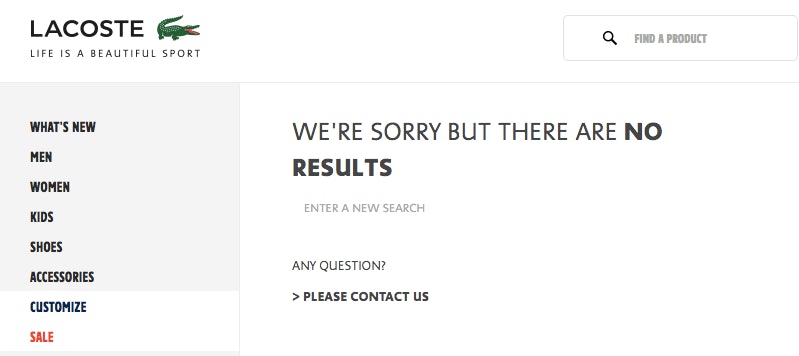I was browsing The Drum’s website this morning when I spotted a campaign from Lacoste that inspired me in its simplicity and goals.
The iconic crocodile logo has been replaced, in limited batches, by various endangered species in a campaign highlighting the severity of the danger these animals face. The fact that only 1,775 polo shirts exist in this format is further proof of the extent of the problem, with many of the species featured having fewer than 100 individuals left in the world.
The importance of CSR should never be underplayed. Indeed, as we’ve continued to grow as an agency, we’ve invested heavily in CSR, from basic recycling of goods in the office to charity bake sales and even team marathons. We also do a lot of work with local universities, schools and business support organisations to give our time freely to help others build their digital skills. It’s all an important part of how we continue to give back and how we’re perceived as a business. Plus, we all really enjoy knowing we’re part of a business that does give back.
In Lacoste’s case, they’ve managed to turn CSR into a fantastic PR campaign, too. And why not? It’s going to benefit the brand, for sure, but essentially they’re using their brand as the stage on which to showcase this important issue. It’s gaining a lot of coverage, not only on The Drum but across news sites globally, and that has got to be a good thing.
The cost to the business? Probably minimal. Just under 2,000 polo shirts, a new landing page and, of course, a solid creative PR agency means that Lacoste is probably putting this campaign down as a resounding success.
The only thing they’re missing, in my opinion, is the SEO value. Now, I’m not saying a campaign like this should be all about SEO – and no doubt they’re seeing a fantastic retail uplift purely through the brand positioning – but I can’t help but feel they’ve missed a really basic opportunity here.
Try searching for ‘Lacoste endangered polo’ (which was what I looked for to learn more about this). The Lacoste site doesn’t even show in the top 50 for me. Then try ‘Lacoste save our species’ (which is the name of the campaign) – I found the Lacoste site here, but not before I found a myriad of media articles about the campaign.
Wouldn’t it make more sense for the campaign if basic optimisation techniques and SEO creativity had been employed to ensure that the brand’s own page appeared for this search? If we consider PR a method of creating searcher intent, isn’t it common sense to do those things which will help our own site to become the answer to that search?
The sales of the polo shirts in this case raise money for the cause it’s promoting, so isn’t it a shame that the page where you can buy them ranks so poorly?
As it happens, the polo shirts are (unsurprisingly) out of stock now, as we can see on the brand’s page:

If I’d been working on the campaign, I would have approached it in exactly the same way, aside from the SEO component. I would have tried to gain what is, in my opinion, some easy SEO value from this by:
- Creating an appropriate landing page for the campaign. For me, this would include the ability to buy the shirts, but also things like the fantastic video used on The Drum’s coverage, further information about the cause, and links out to other ways to support endangered species. Plus, basic search optimisation like the campaign name in the title, plenty of relevant content and imagery, and so on.
- A press release using that landing page as the source of information so that media sources are encouraged to link to this page, to help build its ranking position.
- A strategy for ‘out of stock’, whereby an alternative purchase option was provided (personally, I’d have tried to get a larger number of polo shirts with the normal logo but a small percentage of the sale going to the same cause) and where people could still get the information, rather than a ‘sorry no products’ response.
By implementing these three simple things, they could have continued to benefit from the value of the campaign in terms of traffic, rankings and website strength well into the future.
So what can we learn for our own brands?
Firstly, the brand positioning in this campaign was pretty spot on. They tapped into something emotive that will mobilise their audience into buying the shirts (therefore doing a good thing) but also position them as a brand that really cares. They sell clothes. Lots of brands sell clothes. But now, people may be more likely to choose Lacoste clothes because they believe the brand stands for good.
Secondly, it’s not a complex campaign, but it does, as some people on social media are arguing, go against brand guidelines. I imagine the brand team had a few heated discussions about this, as particularly larger brands can be less open to flexing their brand guidelines (though KFC’s recent social win with their FCK campaign is further proof of the potential value). If we want to make these creative, brand and marketing gains, we may at times have to be flexible in our approach.
Thirdly, it’s about having an integrated approach. The collaboration between PR and CSR here is awesome, but could they have achieved even more with a strategy that also incorporated SEO and other digital channels? If you’re putting together a PR campaign, it’s important to recognise that it might not always achieve the coverage you hope but by layering your approach with other channels, you can ensure your business feels the benefit much more broadly than just today’s news feature.
What do you think? Did you like the campaign? Are there any other examples of similar CSR/PR hybrids that you’ve enjoyed? How important is CSR in marketing? Let us know in the comments below.



